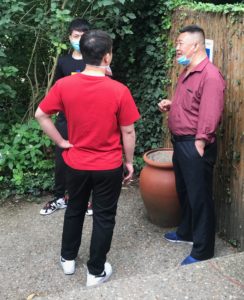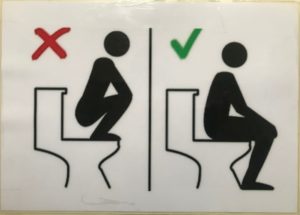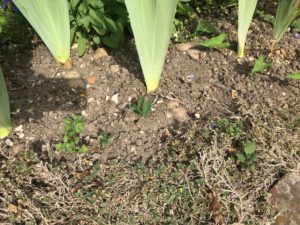In which Sid and Doris follow the Seine to Monet’s house and garden at Giverny and then to a small flat in the Marais, Paris.Hermann is gingerly piloted from the narrow underground car park and through Sunday quiet Rouen streets. The pelotons are out. Yesterday we saw a group on race light bikes with a tiny bit of luggage that might have come from Belgium. Chapeau or possibly hoed for the Flemish? Anyway, a great feat of legs.
 En route to Giverny we saw three Corvettes, one with roll up lights, then a C4 and C6. Sorry we missed the meet. The other star of the day was a charming Simca Elysee in green. I bet the Chevrolets had an easier time of the hills around here than the Simca.
En route to Giverny we saw three Corvettes, one with roll up lights, then a C4 and C6. Sorry we missed the meet. The other star of the day was a charming Simca Elysee in green. I bet the Chevrolets had an easier time of the hills around here than the Simca.
Giverny is completely vaut le voyage, as M. Michelin has it. You wouldn’t want more people so coming at a time of plague has paid off, no coaches. Although we were mostly outside we were asked to stay masked even in the garden but given the crowding everyone went along with it. The planting is fabulous as the pictures will go some way to showing.
[We took a total of about 16 photos, all using the iPhone and were therefore some thousands of pictures short of the average, judging by the activity of the other visitors. And in fact the garden photographs better with proper equipment, so Mr Google has helpfully assembled some finer pictures in this link here: pictures of monet’s garden D.]
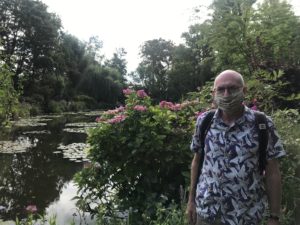
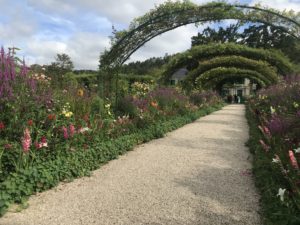
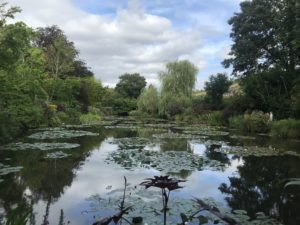
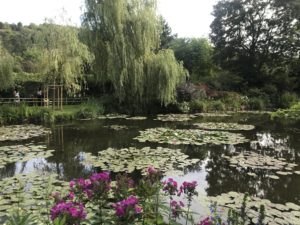
 Monet bought the house in 1883. There are two gardens, the Japanese inspired water garden with charming rills, lake and bridges, and another closer to the house set out in alleys which are like borders but not on the edge of anything. The planting is amazing and you do not have to like gardening to love being in such a garden.
Monet bought the house in 1883. There are two gardens, the Japanese inspired water garden with charming rills, lake and bridges, and another closer to the house set out in alleys which are like borders but not on the edge of anything. The planting is amazing and you do not have to like gardening to love being in such a garden.
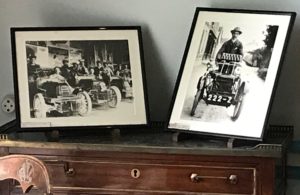 The photographic record forks here because while Sid was taking a picture of the only cars in the entire place, Doris had a cultural diversion by spotting three Chinese-speaking spouses having a crafty fag behind the loo block, and a sign inside the loos that implies that Giverny usually welcomes tourists from a wider range of backgrounds than we saw today.
The photographic record forks here because while Sid was taking a picture of the only cars in the entire place, Doris had a cultural diversion by spotting three Chinese-speaking spouses having a crafty fag behind the loo block, and a sign inside the loos that implies that Giverny usually welcomes tourists from a wider range of backgrounds than we saw today.
In a moment of totally unjustified gardening hubris, S&D also spotted the only weed in the whole garden, one that is entirely familiar from their own lockdown gardening experience this year and is known by the technical name of Weedus Weedus, although they observed with some pride that their specimens are significantly larger.
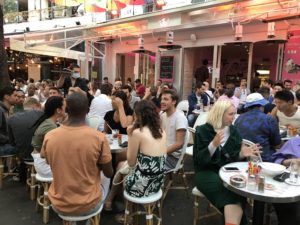 Our evening walk takes us into a suddenly-busy area which looks to be full of locals. While most of France has been fairly strict on social distance and mask-wearing, these boys and girls may feel that they are young and/or they came through AIDS and will be OK again. It is loud like a seal colony and we steer our way cautiously through, not tempted to stop for drinks or dinner. Instead we opt for a tourist brasserie in a much more deserted area in front of the Centre Pompidou, watch the people and take on far too much very good pizza.
Our evening walk takes us into a suddenly-busy area which looks to be full of locals. While most of France has been fairly strict on social distance and mask-wearing, these boys and girls may feel that they are young and/or they came through AIDS and will be OK again. It is loud like a seal colony and we steer our way cautiously through, not tempted to stop for drinks or dinner. Instead we opt for a tourist brasserie in a much more deserted area in front of the Centre Pompidou, watch the people and take on far too much very good pizza.
